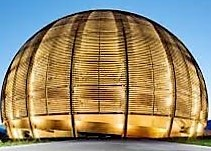Speaker
Description
The astrophysical origins of the heaviest stable elements that we observe today in the Solar System are still not fully understood. While thermonuclear supernovae (SNe Ia) are known to have forged about two-thirds of the iron content in the Solar System, recent studies have demonstrated that H-accreting white dwarfs (WDs) in a binary system exploding as SNe Ia could be an efficient p-process source beyond iron. However, both observational evidences and stellar models calculating the progenitor phase indicate that less than 6% of these systems eventually explode as a SNe Ia.
In this work, we calculated the evolution and nucleosynthesis in slowly merging carbon-oxygen WDs using the stellar code MESA. As our models approach the Chandrasekhar mass during the merger phase, the dominant neutron source is the $^{22}$Ne(α,n)$^{25}$Mg reaction. This is activated in the external layers of the primary WD, where the carbon-rich material accreted from the secondary WD is burned via the $^{12}$C+$^{12}$C reaction, which provides the necessary α-particles via the $^{12}$C($^{12}$C,α)$^{20}$Ne channel. The resulting neutron capture abundance distribution closely resembles a weak s-process one and peaks at Zr, which is overproduced by a factor of 100 compared to solar. The mass of the most external layers enriched in first-peak s-process elements crucially depends on the $^{12}$C+$^{12}$C reaction rate, being 0.06 Msun when our standard $^{12}$C+$^{12}$C reaction rate is adopted, or even 0.1 M$_{\odot}$ when the $^{12}$C+$^{12}$C reaction rate is increased by a factor of two. Finally, we discuss our first explosive nucleosynthesis models implementing this enriched trans-Fe abundance distribution as the initial composition. Our results indicate that slow white dwarf mergers can efficiently produce the lightest p-process isotopes (such as $^{74}$Se, $^{78}$Kr, $^{84}$Sr, $^{92}$Mo and $^{94}$Mo) via photo-disintegration reactions if they explode via a delay detonation mechanism, or eject the unburned external layers highly enriched in first peak s-process elements in the case of a pure deflagration. In both cases, we propose for the first time that slow white dwarf mergers in binary systems may be a new relevant astrophysics source for elements heavier than iron.




